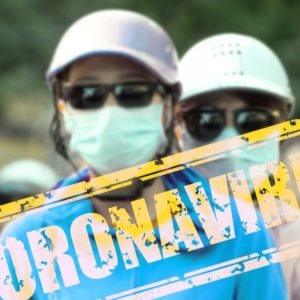SEOUL — You have to admire the efficiency with which South Korea is managing its campaign to stop the coronavirus from spreading.
Confined to house arrest ― I mean quarantine ― at my place in Seoul, I get calls twice a day from a nice woman named “Ms. Park” at the local district office, on top of daily reminders on my phone to self-diagnose through an app they installed at Incheon airport after I arrived in Seoul from Washington.
All this attention may seem unnecessary considering that the virus test they gave at the airport came back negative the next day. That was all I needed for release from the youth center near Cheonan, about 50 miles southwest of Seoul, where I’d spent the night sleeping on a “yo” on the floor, but I wasn’t through yet.
Then came the bus ride to my district medical center, the only destination to which I could buy a ticket, and a warning from people at the center that I had to stay home for two weeks or risk a horrendous fine, not to mention expulsion from the country.
They had a van at the center waiting to take me to my exact address. The driver, like everyone else, was garbed head to toe in white. No way did they want to risk passing the dreaded disease to an innocent taxi driver.
The next day a couple of people showed up at the door with hand sanitizers and face masks just in case I hadn’t bothered to buy them. Literally, they were at the door. No, they wouldn’t come inside for fear of catching whatever bug I might still be carrying.
You wonder, seriously, what were the odds of having the bug after testing negative and passing it on, and were all such precautions really necessary? When I asked Ms. Park at the district office whether any of the people she called every day had suddenly reported symptoms of the disease while in quarantine, she said no.
But then, seeing the stats on TV ― you do get a lot of time watching TV in quarantine ― I also wondered how else you could deal with this disease.
After the first alarming news that COVID-19 among members of a Christian sect in Daegu had picked it up from citizens in Wuhan, there was no denying the powers-that-be had been remarkably successful in stopping the bug in its tracks.
The numbers told the story. From hundreds of new cases every day, the total had descended to two digits a day, even one digit. The total number of deaths, rising above 200, was not good news, but it could have been worse, far worse.
Look at the numbers in the United States, from which I had just arrived. They were going through the roof, first above 20,000, then 30,000, up to more than 45,000 total deaths, far more than in any other country including Italy and Spain, which were suffering the most before my departure from Washington.
Victor Cha, the noted scholar and expert on Korea in Washington, wrote in Foreign Affairs that Americans would never accept the kind of strict measures enforced in South Korea. The American Civil Liberties Union and just about every other advocacy group would be screaming about infringement on basic liberties, human rights and all the rest.
Maybe so, but in battling a dreaded disease for which there is no cure, it’s what works that counts. In Korea, the system may not be altogether fun or seem all that necessary, but it seems to be working. You can’t attack the disease piecemeal by testing a few people here and there, giving others a pass on the theory, “Well, surely they’re OK.”
The proof that the system is working in Korea is that shops and stores are open, factories are humming and people are still riding buses and subways. You have to believe that controls, such as those I’ve experienced over the past 10 days or so, are needed to keep life going normally.
The United States is a much bigger country, it’s far more diffused ― geographically and culturally and ethnically, just about any way. There’s a lot of disagreement over whether to relax controls, to tighten them, to assert federal authority over managing and stopping the disease or leave it all to each of the 50 states.
You’ve got to think anyone who wants a coronavirus test should get one, free of charge, anyone should be able to buy a face mask and every hospital should have the facilities, including ventilators, for curing the sick.
It’s good to see all that in place in Korea, as I’ve observed and experienced firsthand from the sanctuary of quarantine.

